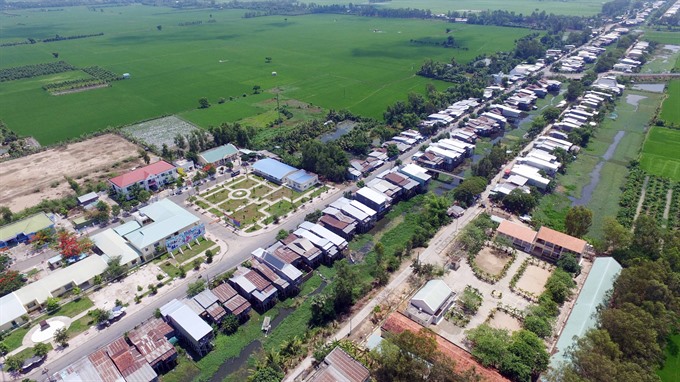 Politics & Law
Politics & Law

Application of a uniform standard not tailored to meet specific needs of communities is limiting the success of the nation’s rural development programme, National Assembly deputies said yesterday.
 |
| A new rural area in Châu Đốc City in the southern An Giang Province. While the national rural development programme has brought about several positive changes in the nation’s rural areas over the last five years, applying homogeneous development criteria is a major shortcoming that has to be addressed, National Assembly deputies said. VNA/VNS Photo Mạnh Linh |
HÀ NỘI — Application of a uniform standard not tailored to meet specific needs of communities is limiting the success of the nation’s rural development programme, National Assembly deputies said yesterday.
While agreeing with a report that the programme has brought about several positive changes in the nation’s rural areas, they said applying homogeneous development criteria was a major shortcoming that had to be addressed.
The report, reviewing five years of implementing the national programme on building new rural areas, said the face of the Vietnamese countryside had been changed for the better, with increasing incomes and a significant reduction in the number of poor households.
It was tabled by Vũ Hồng Thanh, Chairman of the National Assembly Economic Committee.
The rate of poor households dropped to 8.2 per cent last year from 17.4 per cent in 2011, the report said.
As of September this year, 2,045 communes managed to meet the new rural development criteria. Annual incomes of people in communes that met the new rural area criteria went up to VNĐ28.4 million (US$1,300) in 2015 from VNĐ16 million (US$700) in 2011.
The Govenment has mobilised about VNĐ851 trillion (US$37.3 billion) and the National Assembly allocated VNĐ15 trillion (US$658 million) for the national programme over the past five years, the report said.
It said agricultural restructuring, which was carried out in tandem with the rural development programme, had contributed to increasing incomes, changing rural labour structure and developing sustainable new rural areas.
In the last two years, the agriculture sector has maintained a sound growth rate and considerably improved productivity and quality of many agro-products.
Animal husbandry was shifting gradually from a small household scale to that of large farms, and aquaculture had become the mainstay of fisheries instead of fishing. The forestry sector also grew at a rapid pace, the report said.
Nonsensical targets
Most of the deputies agreed with the report, but pointed out shortcomings and obstacles hindering the rural development programme.
They said the criteria set by the programme were not region-specific, and this was slowing rural development.
For instance, the programme sets the number of schools, markets, clinics, post offices and cultural houses for a commune to match the new rural area requirements.
However, this number is not changed based on the size of the commune.
Deputy Nguyễn Ngọc Phương of central Quảng Bình Province said: “Applying the same criteria to all communes is nonsense.”
“Building more schools and cultural houses are more important than building markets. In fact, in many communes, markets were built but deserted because both sellers and buyers preferred to go to small traditional markets rather than the modern ones,” Phương said.
“Meanwhile, in rural areas, especially remote mountainous regions, people need cultural houses where they can gather on special days or organise community meetings.”
Many targets set by the programme did not work because they did not suit the specific region or account for rural people’s traditions and customs, other deputies pointed out.
Nguyễn Hồng Vân, a deputy from southern
Many deputies also pointed out that funding and allocation of funds were some of the main obstacles.
Bạch Thị Hương Thủy, a deputy from northern
On restructuring agricultural production, most deputies felt the pace was slow, making the sector lag behind other countries in the region at a time when
Hà Tĩnh deputy Võ Kim Cự said some of the obstacles that should be addressed soon include small-scale production, lack of professional marketing and low application of advanced technology.
“Our country’s agricultural production is still in a small scale and self-sufficiency mode, so Made-in-Vietnam agro products have not been able to get a foothold in the international market,” Cự said.
He suggested that special production areas are established to ensure sufficient supply for the processing industry.
Private investment
Luring investment from businesses to implement the new rural area programme was a key issue discussed at yesterday’s meeting.
Deputies agreed that the Government should issue policies to attract private business investment in agricultural production. This would provide the needed leverage to comprehensively restructure the agriculture sector, they said.
The NA asked the Government to review the new rural area development programme’s criteria for the 2016-2020 period. — VNS




